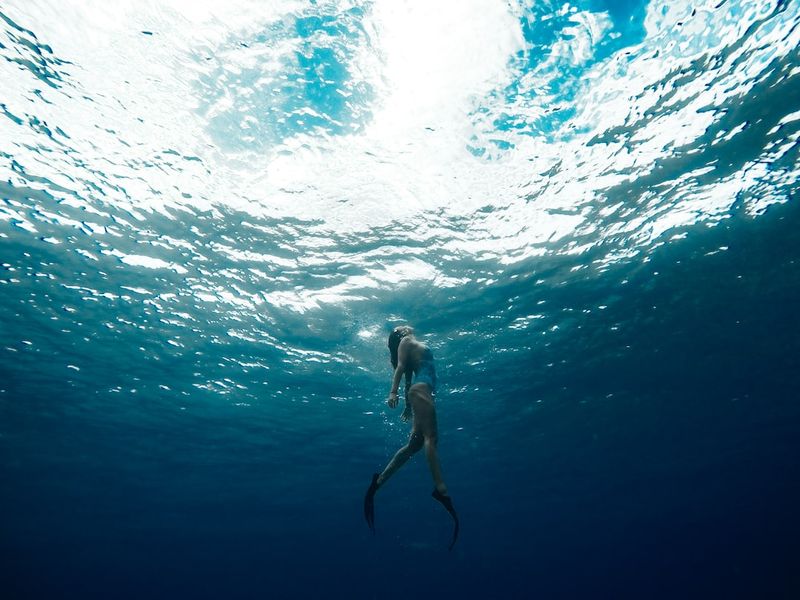How the Titan Submersible Disaster and Search Mission Unfolded
Adventure of a Lifetime Turns into a Nightmare
The journey of the Titan submersible began on Sunday, June 17, with the crew embarking on what was supposed to be the adventure of a lifetime – exploring the undersea frontier. However, this expedition ended in tragedy as the submersible experienced a catastrophic failure, leading to a desperate international rescue mission.
The submersible, piloted by Stockton Rush, the CEO of OceanGate, was accompanied by British adventurer Hamish Harding, Shahzada Dawood and his son Suleman, both from Pakistan, and French explorer and Titanic expert Paul-Henry Nargeolet. The cramped conditions of the 22-foot long vessel did not dampen their spirits, as they eagerly anticipated their descent to the wreck of the Titanic.
The Disappearance and Delayed Alarm
After half an hour on the surface, the submersible began its descent to the Titanic shipwreck site, located 350 miles off the coast of Newfoundland, Canada. Titan relied on its mothership, the Polar Prince, for navigation. However, one hour and 45 minutes into the descent, communications were lost. Despite the mounting concern for the crew, OceanGate did not immediately raise the alarm.
It wasn’t until 8 hours after communications were lost, at 5:40pm, that OceanGate reported the sub missing to the US Coast Guard. The Canadian coast guard was not alerted until even later, at 9:13pm. By Monday morning, a large-scale rescue operation was launched, with US and Canadian ships and planes joining the search effort.
A Desperate Search
Over the next 48 hours, search efforts covered an area of over 10,000 square miles in the wild Atlantic Ocean, but there was no sign of the submersible. OceanGate stated that there were concerns for those aboard, as they had limited oxygen supply left. Even if the submersible was found, the rescue operation would be challenging due to its location.
The US Coast Guard, lacking a vehicle capable of reaching the Titanic wreck, authorized private contractors to use their advanced equipment. The French research vessel, Atalante, was diverted to the search area at the request of French President Emmanuel Macron. Deep water robot submersibles were deployed, including Victor 6000, capable of reaching deeper depths than other submersibles, and CURV-21 and Odysseus 6K, two remotely operated vehicles or ROVs.
A Tragic Discovery
As time ran out, a “debris field” was discovered near the bow of the Titanic by one of the ROVs. The US Coast Guard confirmed that the debris was the remains of the submersible and that no one had survived. The parts of the submersible came to rest about 1,600 feet from the Titanic. The spread-out debris field indicated that the craft had experienced an implosion in the water column rather than a collision with the Titanic.
Officials suggested that the bodies of the crew may never be recovered. Rear Admiral John Mauger of the US Coast Guard stated that the search would continue, but the prospects were uncertain. The tragic loss deeply affected OceanGate, with the company mourning the loss of life and the joy they brought to everyone they knew.
The Philosophical and Ethical Implications of Deep-Sea Exploration
The Titan submersible disaster raises important philosophical and ethical questions surrounding deep-sea exploration. The pursuit of scientific knowledge and human curiosity often drives humans to venture into uncharted territories, such as the depths of the ocean. However, as this tragedy demonstrates, these explorations are not without risks.
One of the main ethical questions raised by deep-sea exploration is the responsibility to ensure the safety of those involved. In the case of the Titan submersible, concerns about its safety were raised as far back as 2018, indicating a potential lack of attention to safety protocols. This tragedy serves as a reminder that safety should always be the top priority in any expedition, especially when human lives are at stake.
Another ethical consideration is the impact of these explorations on the environment. The Titanic shipwreck, in particular, is an important historical site that holds cultural significance. The decision to explore and potentially disturb this underwater heritage site should be made with great care and respect. Measures should be in place to ensure minimal damage to the wreck and its surroundings.
Furthermore, the financial aspect of deep-sea exploration raises questions about access and inequality. OceanGate normally charges a quarter of a million dollars for a ticket to explore the Titanic shipwreck. The high cost of these expeditions restricts access primarily to the wealthy, leaving many without the opportunity to experience and learn from these unique environments.
The Future of Deep-Sea Exploration
The Titan submersible disaster should serve as a wake-up call for the deep-sea exploration industry. Lessons must be learned from this tragedy to prevent similar accidents in the future. Stricter safety protocols, thorough risk assessments, and regular equipment maintenance are essential to ensure the well-being of those involved.
Moreover, there is a need for international collaboration and regulatory frameworks to govern deep-sea exploration. The oceans are a shared resource, and it is crucial to establish guidelines that promote both scientific progress and environmental protection. The tragedy of the Titan submersible highlights the importance of coordinated search and rescue efforts in such cases.
While the risks associated with deep-sea exploration are undeniable, so too are the potential rewards. The ocean depths hold mysteries yet to be discovered, and scientific research in these areas can lead to significant advancements in our understanding of the planet. However, it is essential to ensure that these expeditions are conducted responsibly and ethically, with safety as the highest priority.
In conclusion, the Titan submersible disaster and the subsequent search mission highlight the risks, ethical considerations, and future challenges of deep-sea exploration. As we continue to push the boundaries of knowledge and exploration, it is crucial to approach these endeavors with caution, responsibility, and a deep respect for the often-unpredictable forces of nature.

<< photo by Landon Parenteau >>
The image is for illustrative purposes only and does not depict the actual situation.
You might want to read !
- Don’t Take That Titanic Submarine – A Lesson James Cameron Could Have Taught
- The Spectacle of Silicon Valley: Elon Musk Challenges Mark Zuckerberg to a Cage Fight
- Aftermath of Gas Explosion Leaves Dozens Injured in Central Paris
- Rail Chaos Looms: RMT Union Unveils Three-Day Strike Action in July
- Lost at Sea: The Mysterious Disappearance of Stockton Rush ’84 in the Titan Submersible
- From Vision to Tragedy: The Untold Story of Titan Submersible and Stockton Rush




